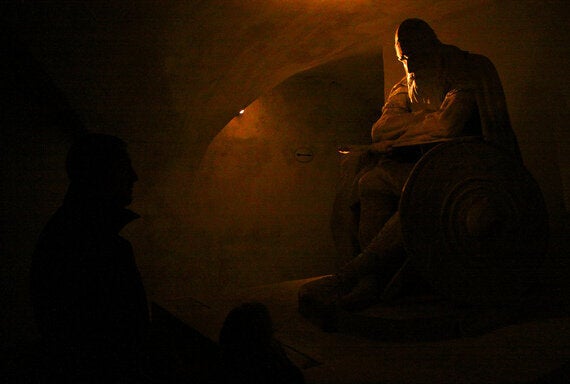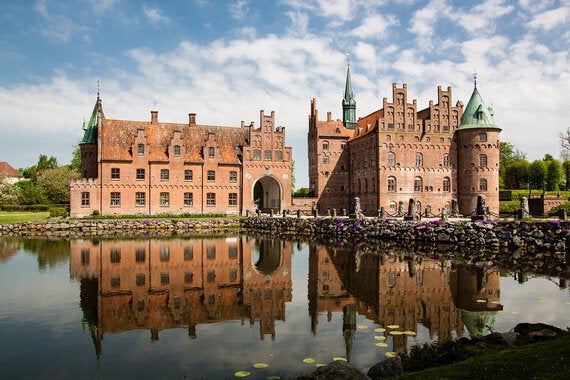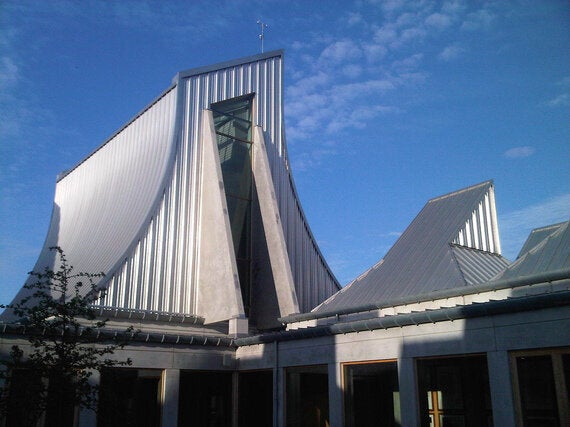When it comes to sightseeing in Denmark, the capital city of Copenhagen tends to take all the glory. Of course, nothing is wrong with that. Without a doubt, this wondrous metropolis on the far eastern coast of Denmark is truly deserving of all the attention it receives.
After all, most have heard of or even seen the storied Little Mermaid, experienced the whimsical Tivoli amusement park, toured the renowned Carlsberg breweries, and strolled through the age-old Bakken amusement park full of charm and history on the outskirts of the city.
So, in the name of parity, a tour of the rest of Denmark seems to be in order. Whether you're a current or previous visitor, a visitor-to-be, or indeed a Dane, the following rundown offers some of the sights worth seeing in Denmark west of Copenhagen.
The Rest of Zealand
Not to be confused with the country of New Zealand, the Danish island of Zealand (Sjælland) houses close to half of the country's modest population. In the minds of many (especially non-Zealanders), Zealand is synonymous with Copenhagen, but the island does hold other marvels, as well.

Due west from Copenhagen, you can find the city of Roskilde, infamous for the annual Roskilde Festival, which attracts guests and musicians from all corners of the world. Names such as Kraftwerk, Bruce Springsteen, Iron Maiden, and Muse have all performed on the festival's main, orange stage in recent years, and upwards of 130,000 people can take part in the festivities during the week-long event.
Although not technically west of Copenhagen, the shoreline north of the city offers some spectacular scenery, with a couple of noteworthy stops along the way. First, the Louisiana Museum of Modern Art in the township of Humlebæk sports more than 3,500 artworks, taking full advantage of its beautiful location on the coast.

Second, on the northeastern tip of Zealand in the city of Helsingør, you'll find the castle Kronborg, which was the setting of Shakespeare's Hamlet. Also, hidden away in the cellars of Kronborg, perched over sword and shield, sits the statue of Ogier the Dane (Holger Danske), who, according to legend, will rise valiantly from his post if danger looms large for Denmark.
The Island of Funen
From Zealand, the bridge over the Great Belt (Storebælt) takes you westward to Funen (Fyn). This middle island's unrivaled claim to fame is the house of the world-renowned fairytale writer Hans Christian Andersen. His historic home can be found in Odense, the country's third-largest city. A few blocks down, you can also find the Danish Railway Museum, which tells the story of one of the more popular modes of transportation among Danes.
If, however, industrial tales do not take your fancy, and the fairytale writer's home is not enough to satiate your creative thirst, you should explore the H.C. Andersen Trail. This scenic route traverses most of Funen and will take you to a dozen different castles and manors that reportedly inspired many of his works. There's even a smartphone app for those completely out of touch with the olden days in need of some modern assistance on their way.

In the southeastern part of Funen lies the immaculate Egeskov Castle and its gardens, a previous winner of the Best European Historic Garden Award. The castle gardens are known as the most beautiful in all of Denmark, and the castle itself is also open to visitors and offers all kinds of historic exhibits, from vintage cars to dollhouses.
Jutland, Denmark's Mainland
If you follow the highway even further west, the bridge over the Little Belt (Lillebælt), will take you to the mainland of Denmark, Jutland (Jylland). Often depicted as a dark and rural place, this peninsula is brimming with places to go and people to meet, as well.
On Jutland's eastern coast, you'll find Aarhus, exceeded in size only by Copenhagen, and with all the hustle and bustle of any respectable big city. It's also currently the only Danish city other than Copenhagen with its own InterNations expat community.

One of Aarhus' main attractions, the museum of ARoS, is most known for its, quite literally, crowning art piece. Atop the building is a circular hallway with stained glass walls in the colors of the rainbow, providing a stunning 360-degree vantage point from which to admire the city in the color of your choosing. A little further north in Aarhus, you can find what is known as "old town" (Den Gamle By), a living, open-air museum sporting a toy museum, a bakery, and many more buildings exhibiting life as it was in centuries past.

In northern Jutland, the city of Aalborg boasts the possibilities of a metropolis combined with the feel of a pleasant little township. Its city center hugs the waterfront, where a stroll will take you past the 16th-century Aalborghus Castle and the Utzon Center, the final architectural spectacle of the late Jørn Utzon, the famed architect most known for designing the Sydney Opera House. Further down the waterfront, the newly inaugurated House of Music (Musikkens Hus) plays host to the Aalborg Symphony Orchestra, among others.
Of course, an area the size of Jutland hides many more cities and places, each with their own distinctive charm. The city of Esbjerg on the west coast is a proud fisherman's hub, Billund southeast of Aarhus is home to the original, world-famous LEGO Land, and Skagen on the very tip of Jutland is itself a town permeated throughout by the works of a group of 19th-century painters.
There is much to discover between Copenhagen's brilliant splendor, which some would consider excessive, and Jutland's desolate moors, which admittedly can leave a dull impression on a rainy day. Lucky for you and me, though, Denmark covers a small enough area of land that it is pretty undemanding once you're there to get around to see it all.